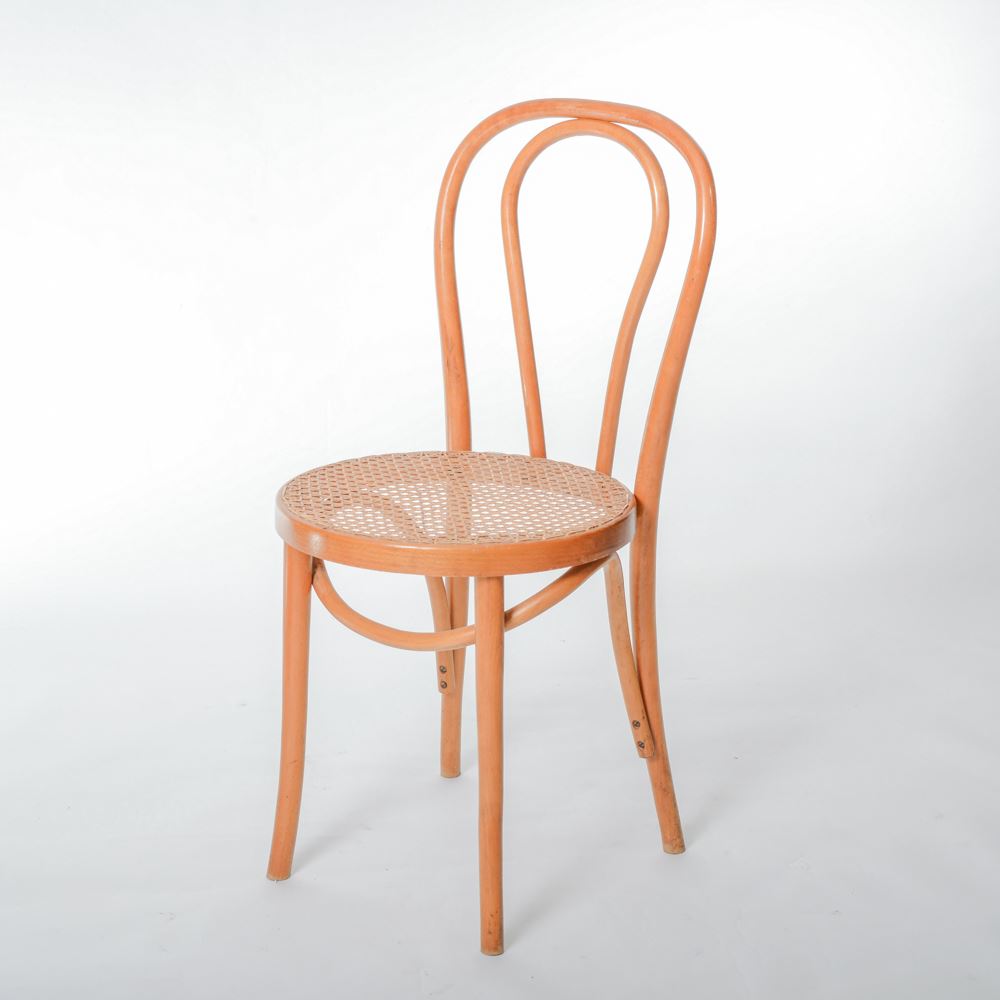
18號曲木椅
設計師 | 邁克·索耐特 (德國)
設計時間 | 1876
品牌 | 索耐特 (德國)
規格 | 寬41.2 x 深47 x 高87.5公分
材質 | 山毛櫸曲木.藤
No.18 Bentwood Chair
DESIGNER.Michael Thonet (Germany)
DESIGNED.1876
MANUFACTURER.Thonet (Germany)
DIMENSIONS.W41.2 x D47 x H87.5cm
MATERIALS.Bent beech, cane
19世紀中期,居住在德國萊茵河上游的邁克·索耐特(Michael Thonet)發起了一場椅子的量產革命。隨著歐洲中產階級崛起,對價格合理的家具需求激增,再加上奧地利工業技術的快速發展,索耐特開始探索新技術,以提升生產效率。
他最初以製作畢德麥爾(Biedermeier)風格家具為主,將薄木片浸泡於膠水,再固定於彎曲模型。然而,因各地氣候差異,外銷的家具陸續發生脫膠問題,索耐特開始嘗試以蒸氣加工技術製作家具。
1853年,索耐特引入機器,以蒸氣軟化木材,並用模具迅速固型生產組件,從而擴大了公司的規模;1858年,他推出第一款以實木曲木製作設計的簡潔作品-No.14曲木椅。No.14曲木椅由六個組件組合而成,並通過螺絲將其固定,是全球第一把工業化量產的椅子。而自1859年生產以來,No.14曲木椅的產量已經超過五千萬張,至今仍由德國索耐特(Thonet)公司生產。
No.18曲木椅同樣以實木曲木作為框架,並搭配藤編椅面、金屬與木質配件製作,椅背的“髮夾”造型設計引人注目。No.18是索納特公司的外銷椅,南美洲的餐廳和咖啡館經常可以看到它的身影。椅子可以拆卸成單獨的部件,36把椅子可以裝入一個海運箱,方便大量出口長途運輸,之後再由當地的門市或經銷商進行組裝,這樣的運輸成本比完成組裝的家具節省許多。
索耐特製作的曲木椅不僅是現代設計的經典,更見證了歐洲歷史的發展,約翰內斯·布拉姆斯(Johannes Brahms)、弗拉迪米爾·列寧(Vladimir Lenin)和阿爾伯特·愛因斯坦(Albert Einstein)都曾使用過,至今仍廣泛被使用於各種公共場所和家庭中。
In the mid-19th century, Michael Thonet, based along the Upper Rhine in Germany, initiated a revolutionary approach to mass-producing chairs. As Europe’s middle class rose, demand for affordable furniture surged, further supported by rapid advancements in Austrian industrial technology. Thonet began to explore new production techniques to enhance efficiency.
Initially, Thonet focused on crafting furniture in the Biedermeier style, using glued veneer that was fixed to curved molds. However, the glued joints proved susceptible to climate variations, causing issues in exported pieces. This led Thonet to experiment with steam-bending techniques.
In 1853, Thonet introduced machinery that softened wood with steam and quickly shaped components in molds, enabling his company to expand. By 1858, he unveiled the first industrially produced bentwood chair, the iconic No.14. This chair consisted of six parts, held together with screws, making it the world’s first mass-produced chair. Since its launch in 1859, over 50 million No.14 chairs have been produced, and they continue to be manufactured by Thonet in Germany to this day.
The No.18 chair, also crafted from solid bentwood, features a rattan seat and metal and wood accents. Its distinctive “hairpin” backrest is visually striking. The No.18 became Thonet’s export chair, often seen in restaurants and cafes across South America. Designed for efficient transport, the chair could be disassembled into individual parts, allowing 36 chairs to fit in a single shipping crate, which reduced transport costs significantly. Local stores or dealers would reassemble the pieces upon arrival, making it highly suitable for long-distance exports.
Thonet’s bentwood chairs not only remain timeless icons of modern design but also embody a part of European history. Figures such as Johannes Brahms, Vladimir Lenin, and Albert Einstein once used them, and they continue to be widely found in public spaces and private homes worldwide.